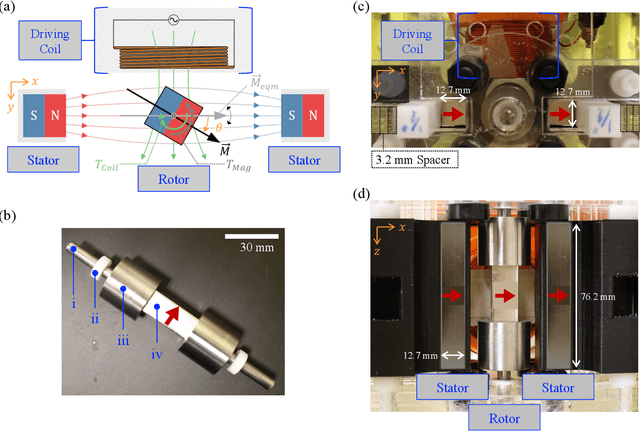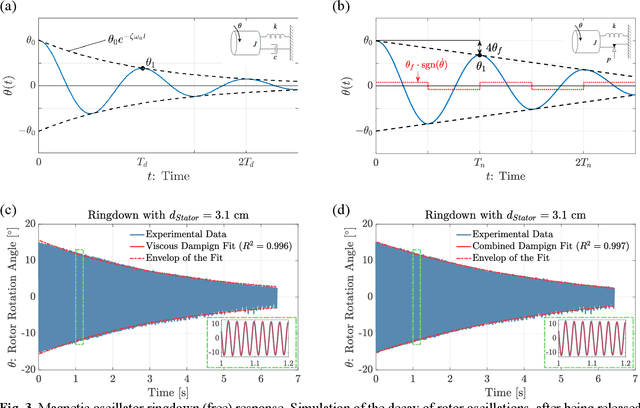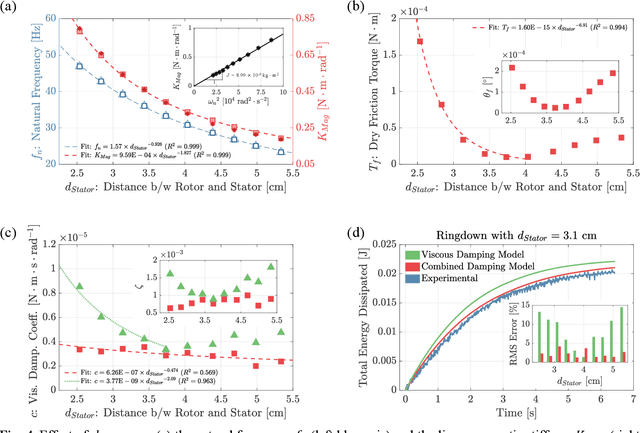Design, Dynamics, and Dissipation of a Torsional-Magnetic Spring Mechanism
Paper and Code
Dec 27, 2021



We present an analytical and experimental study of torsional magnetic mechanism where the restoring torque is due to magnetic field interactions between rotating and fixed permanent magnets. The oscillator consists of a ball bearing-supported permanent magnet, called the rotor, placed between two fixed permanent magnets called the stators. Perturbing the rotor from its equilibrium angle induces a restoring magnetic torque whose effect is modeled as a torsional spring. This restoring effect is accompanied by dissipation mechanisms arising from structural viscoelasticity, air and electromagnetic damping, as well as friction in the ball bearings. To investigate the system dynamics, we constructed an experimental setup capable of mechanical, electrical and magnetic measurements. For various rotor-stator gaps in this setup, we validated an analytical model that assumes viscous and dry (Coulomb) damping during the rotor free response. Moreover, we forced the rotor by a neighboring electromagnetic coil into high amplitude oscillations. We observed unusual resonator nonlinearity: at large rotor-stator gaps, the oscillations are softening; at reduced gaps, the oscillations stiffen-then-soften. The developed reduced-order models capture the nonlinear effects of the rotor-to-stator and the rotor-to-coil distances. These magnetic oscillators are promising in low-frequency electromagnetic signal transmission and in designing magneto-elastic metamaterials with tailorable nonlinearity.
 Add to Chrome
Add to Chrome Add to Firefox
Add to Firefox Add to Edge
Add to Edge